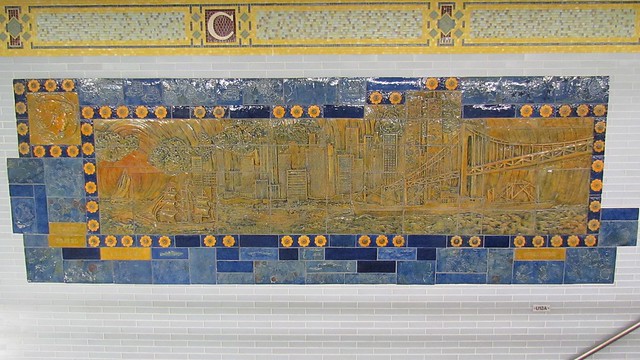With the attention recently on tablet computers in the subway — perhaps for some of the wrong reasons — I have a guest post today from my friend Joseph Pawlikowksi. In addition to writing with me at River Ave. Blues, Joe also keeps up with everything BlackBerry at BBGeeks, and today, he offers up this primer on the best tablet for your commute. I’m an iPad guy myself. It makes reading the papers in the morning on the subway far easier.
Since the introduction of the transistor radio, people have used electronic devices for entertainment on the subway. Think about how many people you see using one on the subway. On some days you might be better off counting the people who don’t have an iPod, a Kindle, or some form of electronic entertainment. The latest trend has involved the tablet PC. The iPad got everything started, and now it seems there are dozens of different tablets making subway appearances. There are dozens of tablets on the market, and each one provides a different experience on the subway. Here are your best bets.
Apple iPad

Pros: It is the standard bearer of the tablet computer. More people own an iPad than any other tablet, so it’s easy to get recommendations on apps and cases from people who already own one. It also has the largest selection of apps, so you’ll have plenty of choices for your entertainment. The big screen makes for great video watching, and there is plenty of storage for your music, videos, and apps.
Cons: The size and weight can be a problem. If you have to stand up, your arms can get tired holding up the iPad while you watch, read, or listen. It’s also an obvious target for any subway theft.
Android tablets

Pros: They come in many sizes, so you can find one that fits your specifications. There are even some that have keyboard attachments, so you can get some work done if you find a seat. There are also tons of apps in the Android Market. Best of all, many of them are free where iPad apps cost money.
Cons: The app environment on Android is not as regulated as on the iPad, so there’s a lot more crap to sift through. While the variety of Android tablets makes it likely you’ll find one you want, there is an abundance of low-quality Android tablets on the market that will break with reasonable wear and tear. That is, in order to find a high quality Android tablet you have to do some homework. The software also isn’t up to par with Android smartphones.
BlackBerry PlayBook

Pros: It’s one of the most compact tablets, measuring 7.6 inches wide by 5.1 inches high. That can fit in the back pocket of some jeans. The video quality is on par with the iPad, even if the screen is a few inches smaller. It ranks among the more durable tablets as well, so if you drop it while sitting you might be able to avoid damage you would incur with an inferior tablet.
Cons: There still aren’t many apps for it, though the addition of the Android player, which gives users access to Android apps, will help. That should come in the fall 2011. There is also no native email and calendar, staples of the BlackBerry platform, though again those are due to hit the PlayBook in the fall. It works best when tethered to a BlackBerry device, so BlackBerry owners will benefit more than non-owners.
A note to subway tablet PC users
If you’re going to carry your tablet on the subway, the first thing you need to do is buy a case. It’s amazing how little of a drop it takes to damage them. As these guys demonstrate, even a waist high drop can ruin your tablet if you don’t have a proper case for it. If you’re on the subway, it’s the No. 1 essential thing you need.












 (Nights)
(Nights)


